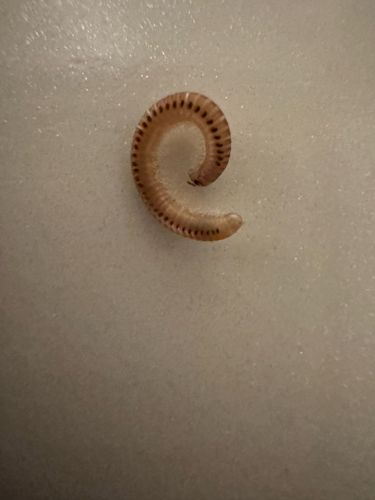Millipede
Scientific Name: Class Diplopoda (specific species not identifiable from image)
Order & Family: Order Callipodida (likely, given appearance), Family Callipodidae or similar, but many millipede families have similar generalistic looks. Without more specific visual characteristics or location, it's hard to be more precise with the family.
Size: Typically range from 0.1 to 15 inches (0.25 cm to 38 cm), with the millipede in the image appearing to be on the smaller end, perhaps 0.5 to 1.5 inches (1.27 cm to 3.81 cm).

Natural Habitat
Damp, dark environments such as under rocks, logs, leaf litter, and in soil. They are commonly found in gardens and forested areas.
Diet & Feeding
Primarily detritivores, meaning they feed on decaying organic matter such as dead leaves, wood, and other plant debris. They play a crucial role in decomposition.
Behavior Patterns
Nocturnal and generally slow-moving. When disturbed, many species (like the one pictured, which is coiled) curl into a tight spiral to protect their softer undersides. They are not aggressive.
Risks & Benefits
Risks: Some species can excrete defensive fluids that may irritate skin or eyes if handled, though usually not dangerous to humans. They can also become a nuisance if they enter homes in large numbers. Benefits: Essential decomposers in ecosystems, helping to break down organic matter and enrich soil.
Identified on: 10/16/2025